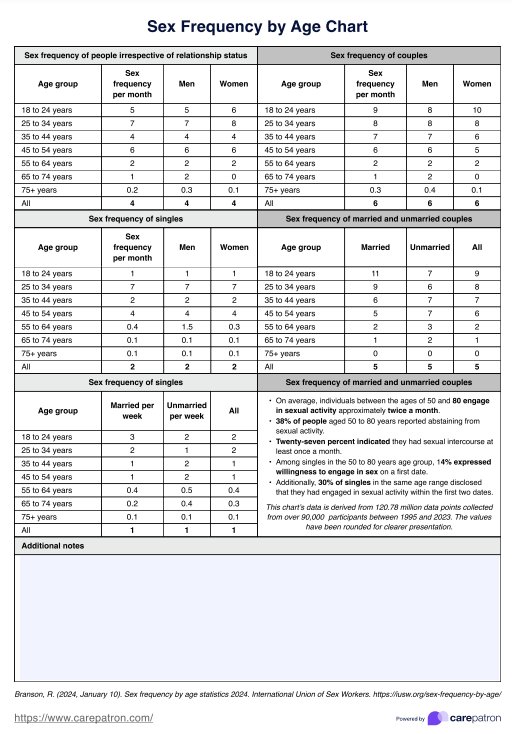The normal sex frequency varies by age, reflecting changes in libido, health, and relationship dynamics. Generally, younger adults (ages 18-29) tend to have the highest sexual frequency. This frequency gradually decreases as individuals age. By the time individuals reach their 60s and beyond, the frequency may drop to 2-4 times per month, influenced by factors such as hormonal changes, health issues, and relationship status.

Sex Frequency by Age Chart
Access a free Sex Frequency by Age Chart PDF. Use our resource as a reference when discussing sexual health with your patients.
Sex Frequency by Age Chart Template
Commonly asked questions
There is no one-size-fits-all answer to how often couples should have sex, as it largely depends on individual preferences, relationship dynamics, and circumstances. The key is open communication between partners to determine what feels right for both individuals.
The sexual desires of a 55-year-old woman can vary widely based on individual factors such as health, relationship status, and personal libido. On average, women in this age group may desire sex about 2-4 times per month, although many may experience fluctuations influenced by hormonal changes associated with menopause, relationship dynamics, and life stressors.
EHR and practice management software
Get started for free
*No credit card required
Free
$0/usd
Unlimited clients
Telehealth
1GB of storage
Client portal text
Automated billing and online payments











